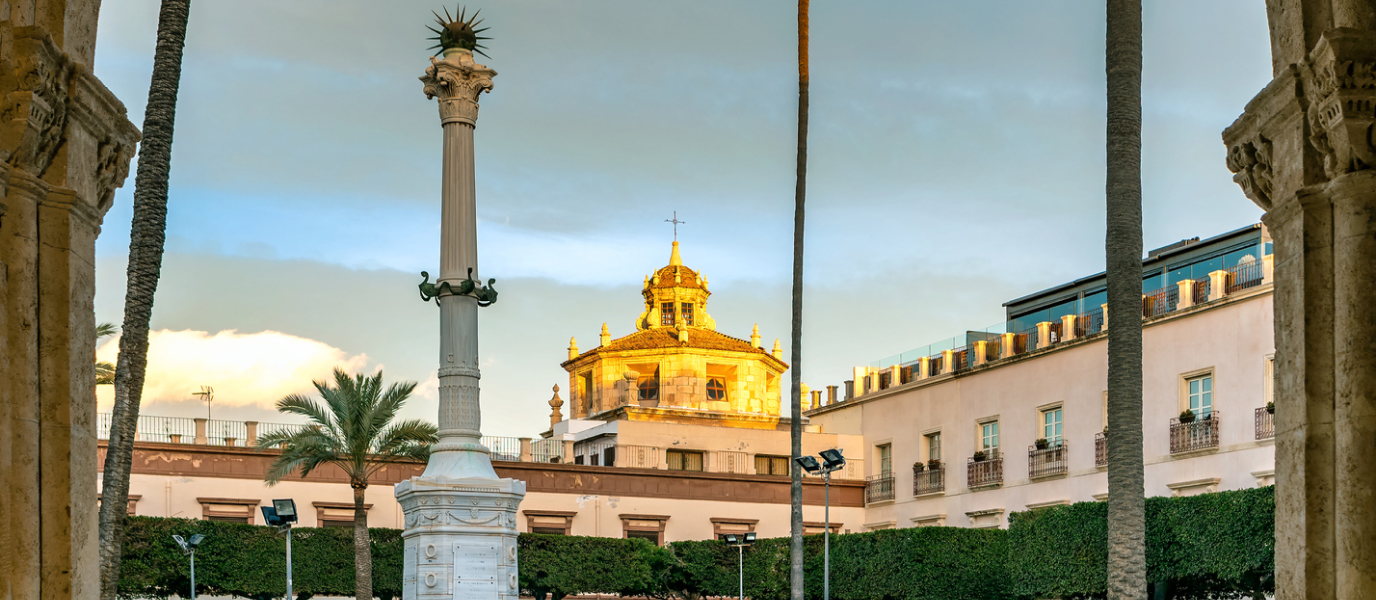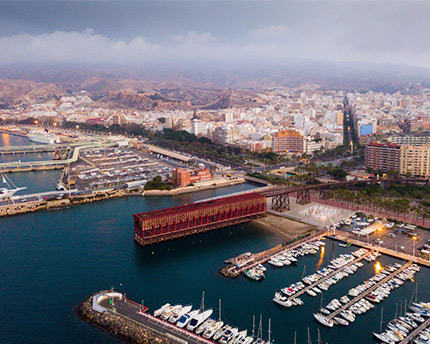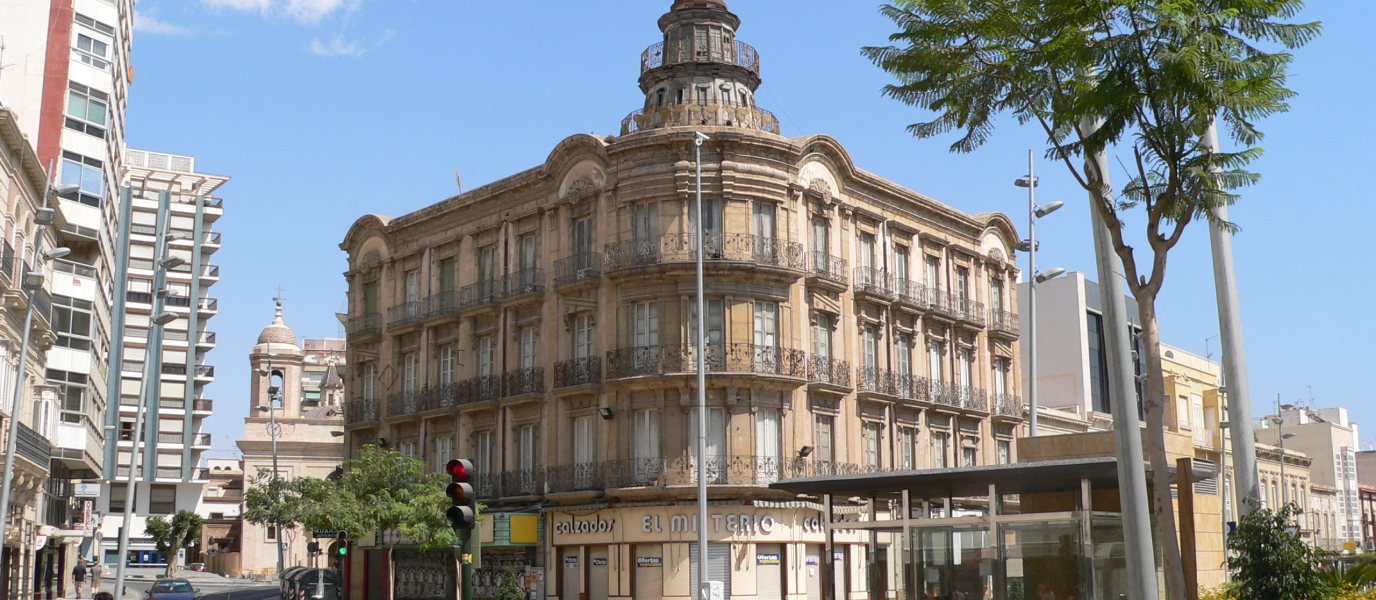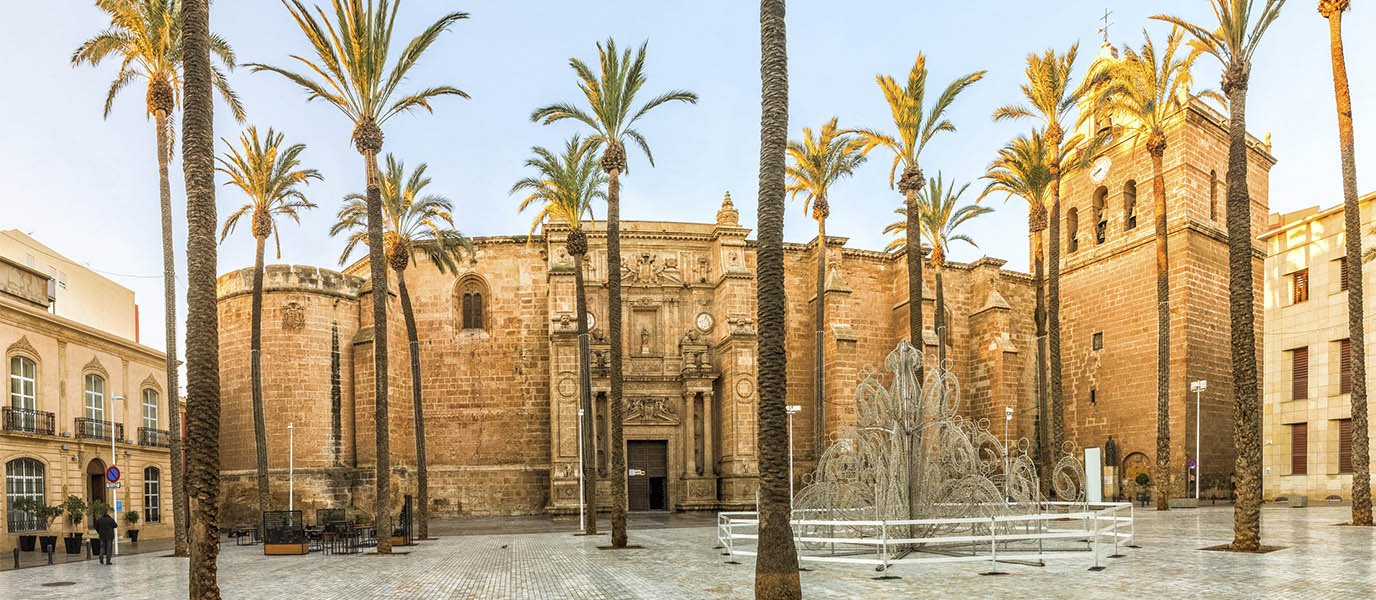The Plaza de la Constitución is the square in the old town of Almeria, and for centuries, it was its social, political and administrative centre. Located on the north-eastern edge of the old town, right at the base of the hill of San Cristóbal, it also acts as the starting point to reach the Alcazaba, Almeria’s most celebrated landmark.
The town hall, the Heritage Interpretation Centre of Almeria and the Tourism Office flank the arcade-bounded and palm-tree dotted square. The commemorative Martyrs of Liberty monument stands in the centre of the square and can be admired from any of the many restaurant and bar terraces found around the square. Read on to discover the history behind this iconic square.
The origins of Plaza de la Constitución
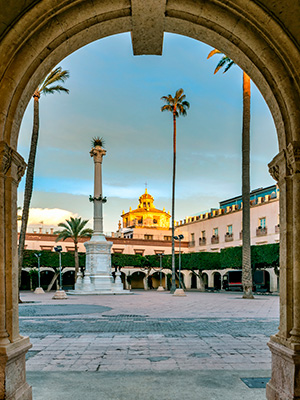
The origins of the square go back a thousand years when the Caliph of Cordoba Abd al-Rahman III built a fortress in Almeria for its highly strategic location. The future Plaza de la Constitución sat at the intersection of two main streets: one which ran west-east, joining the Mosque to the Puerta de Purchena; and the other running north-south, joining the medina to the port. It soon housed the souk and hosted the popular Game of Canes, a mock tournament fought with bulrushes. Even though it was a Moorish military game, it continued to be played by Christians when the city was conquered by the Catholic Monarchs in 1489.
The square eventually became the city’s main square and has had countless different names and uses during its five hundred years of history. The establishment of the town hall in the square ensured a long list of social events, ranging from religious processions to military parades, open-air markets and bullfights. The square underwent significant renovations in 1812 – when the first Spanish Constitution was proclaimed. The local architect Trinidad Cuartara was commissioned to spearhead the elaborate refurbishment which included raising the adjacent houses and building the colonnade. When the work was completed, the elite of the city all wanted to own the balconies lining the square.
The town hall of Almeria
There are several ways to access the secluded square but the main access is off Calle Marín. Once you venture through the arch, visitors are welcomed by two rows of ficus trees and various palm trees. The majestic balanced architecture of the buildings bounding the enclosed space is a characteristic feature of squares in Spain.
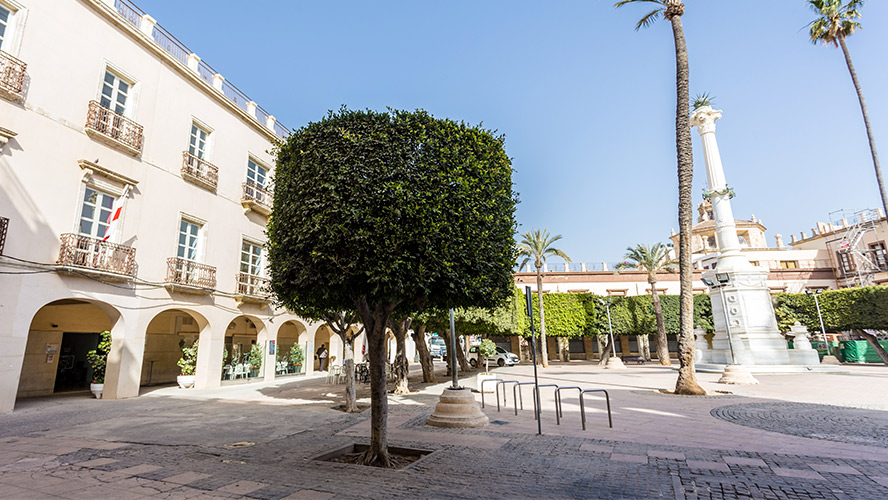
The stunning 20th-century façade of the town hall presides over the square. It owes its eclectic design to the architect Trinidad Cuartara. The impressive central bell tower is flanked by two symmetrical sections and is adorned with the shield of Almeria and the original standard belonging to the Catholic Monarchs. When the clock strikes the hour, the carillon plays the first notes of a local song, Fandanguillo de Almería. Recent excavation work revealed one of the entrances to the underground air-raid shelter built during the Spanish Civil War to protect the population from the incessant bombardment the city suffered at the hands of Francoists and Nazis.
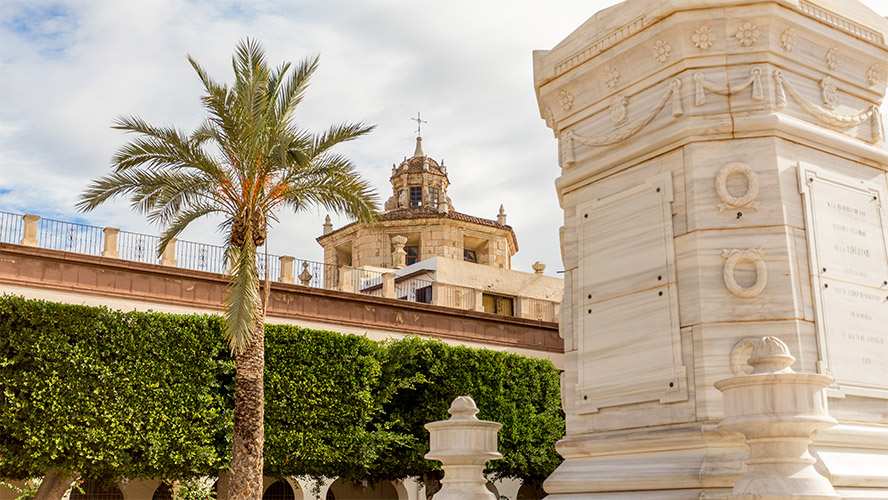
The emblematic monument of the Martyrs of Liberty, locally known as Pingurucho, stands in the centre of the square where a radian, representing the sun, sits atop the commanding marble column. The monument was built to commemorate the liberal soldiers who were executed following their arrival in Almeria in 1824 to fight against the absolutist monarchy of King Ferdinand VII. The current monument is actually a replica of the original which was destroyed in 1943 to not offend General Franco when he was visiting Almeria.
The Heritage Interpretation Centre of Almeria is also housed in the northern edge of the square. This wonderful two-story space opened its doors in 2004 tells the history of Almeria, from the era of the Moors to the reconquest by the Catholic Monarchs, to present day. The fascinating exhibit includes archaeological objects and documents.
Restaurants and bars in the Plaza de la Constitución
Even though the square is located right in the city centre, it is relatively quiet during the day. Sitting down for a meal at one of the terraces is a pleasant way to unwind and savour local cuisine. One of these restaurants is the wonderful tapas bar La Tahona. It concocts award-winning tapas and produces its own craft beer – a refreshing brew with a slight hint of tangerine.
You can also get a taste of Basque cuisine at Joseba Añorga Taberna. This traditional gourmet eatery serves up delicious expertly prepared steaks. A not to be missed dish is the scallop tataki with hummus – simply delicious.
Lastly, there is Vinatería Plaza Vieja which does a wonderful job of merging tradition with contemporary cooking. There menu offers the chance to pick a tapa or two or more elaborate dishes such as the marinated fish with orange-blossom honey. They also have a wonderful wine menu featuring top wines from around Spain.




































































